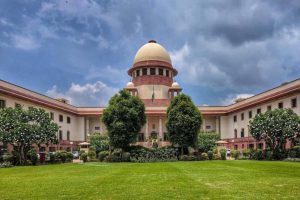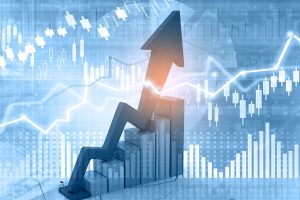On 7 November, the Supreme Court of India pronounced a landmark judgment upholding the 103rd constitutional amendment (Janhit Abhiyan v. Union of India, Writ Petition (Civil) No. 55 of 2019) that provided 10 percent reservation to the economically weaker sections (EWS) of society in educational institutions and public employment. However, the judgment of the 5-judge Constitution bench was not unanimous. While three judges (Justices Dinesh Maheshwari, Bela M. Trivedi, and J.B. Pardiwala) upheld the constitutional amendment delivering concurring judgments, the remaining two judges, including Chief Justice Uday U. Lalit, dissented. While Justice S. Ravindra Bhat wrote the minority judgment, Justice Lalit only agreed to it without writing his separate opinion. Such an incident is very rare in India’s judicial history. It is noteworthy that this was Justice Lalit’s last judgment before he retired.
There have been only a few occasions in India’s judicial history where the Chief Justice of India (CJI) has written a dissenting opinion or agreed with a minority judgment. The last time such an instance happened was more than half a decade back. In 2017, when the Supreme Court declared instant triple talaq (talaq-e-biddat) to be unconstitutional (Shayara Bano v. Union of India, (2017) ), the then CJI Justice J.S. Khehar was in a minority. The only Muslim judge on the Constitution Bench, Justice S. Abdul Nazeer supported Justice Khehar. But unlike this case, the CJI wrote the dissenting opinion and Justice Nazeer agreed to it.
Advertisement
India has been a vibrant democracy since it adopted a new Constitution in 1950 whereby it established a Supreme Court. The court is the final appellate authority on civil, criminal, or other matters besides being a constitutional court. From having writ jurisdiction for enforcing fundamental rights (under Article 32), the court has original jurisdiction on certain matters (such as disputes between the Central Government and one or more States). The Chief Justice of India is the first among equals (primus inter pares) in his/her capacity as a Judge. He (or she) is also the administrative head of the Supreme Court and has exclusive privilege in allocating cases and the constitution of the benches (laid down in Asok Pande v. Supreme Court of India [2018]).
One of the greatest dissents by the CJI happened in 1962 in the Dawoodi Bohra case [Sardar Syedna Taher Saifuddin Saheb v. The State of Bombay]. In that case, Chief Justice B.P. Sinha upheld the Bombay Prevention of Excommunication Act, 1949 which outlawed the Dai-ul-Mutlaq’s power to arbitrarily excommunicate a member of the community. Moreover, Chief Justice Sinha’s famous dissent in Atiabari Tea Co. Ltd v. The State of Assam [1960] is still significant in light of India’s federal structure. Apart from these constitutional law cases, there are important judgments from the perspective of criminal, company, and election law, where the CJI has stated his dissent.
In Deep Chand v. The State of Uttar Pradesh [1959], the then CJI Justice S.R. Das dissented on the issue of whether the doctrine of eclipse applies only to pre-Constitution laws or can also be applicable to any post-Constitution law which falls under Article 13(2) of the Constitution. Justice Das (along with Justice P.B. Sinha) held that the doctrine of the eclipse would apply to a post-Constitutional law that infringed upon the fundamental rights of a citizen alone. On 28 April 1966, the then CJI Justice A.K. Sarkar heading a three-judge bench dissented on a criminal matter concerning outraging the modesty of a woman under Section 354 of the IPC [State of Punjab v. Major Singh]. A week after this judgment, Chief Justice Sarkar was in minority in The Barium Chemicals Ltd. v. The Company Law Board. In the latter case, Justice J.R. Mudholkar pronounced the dissenting verdict for him and the CJI.
With respect to the provision of reservation and separate electorates for Buddhist Sanghas in the Sikkim Legislative Assembly, the then Chief Justice L.M. Sharma gave a dissenting judgment holding it to be unconstitutional [R.C. Poudyal v. Union of India, (1993)]. Moreover, his minority opinion also held that reserving 12 seats for the Bhutia-Lepchas to be ultra vires of the Constitution including Article 371-F (which contains special provisions for Sikkim).
It is not surprising to note that the history of dissenting judgments by the Chief Justice goes back to colonial times. The Chief Justice of the Federal Court, which existed from 1937 to 1950, was also referred to as the “Chief Justice of India” (see the Government of India Act, 1935). There was more than one occasion where the CJI had dissented in that court. In King Emperor v. Shibnath Banerjee [1943], Chief Justice Sir Patrick Spens dissented with the two Indian judges (Justices Sir Srinivasa Varadachariar and Sir Muhammad Zafrulla Khan) on the meaning and powers of the ‘Provincial Government’ under the Defence of India Act, 1939 and its rules.
In independent India, the first dissenting judgment by a CJI was by Justice Harilal J. Kania in Madholal Sindhu v. The Official Assignee of Bombay (on 6th May 1949). Incidentally, this was Justice Kania’s only dissenting judgment as the lone Indian Chief Justice of the Federal Court, after which he succeeded as the first Chief Justice of the Supreme Court. Justice M. Patanjali Sastri, the second Chief Justice, was the sole dissenter in Lachmandas Kewalram Ahuja v. The State of Bombay [1952].
Justice Uday U. Lalit was the second judge to become the CJI after being directly elevated to the Supreme Court from the Bar. Before him, it was only Chief Justice S.M. Sikri who held that distinction. Justice Sikri has a record of dissenting as the CJI. He disagreed with his brother’s judges, who were senior to him in terms of their judgeship (counting their experience in the High Courts and District Courts). Chief Justice Sikri dissented in the four-judge decision of Devidas Vithaldas & Co v. C.I.T., Bombay City [1972], where Justice J.M. Shelat wrote the majority judgment.
The occasions where the Chief Justices of the constitutional courts have dissented in other countries are not rare. The current Chief Justice of the United States John Glover Roberts Jr. has been a part of several dissenting judgments. Justice Roberts was one of the four dissenters in Obergefell v. Hodges [2015], which legalized same-sex marriages. Some of his notable dissents include Georgia v. Randolph [2006], United States v. Windsor [2013], and Uzuegbunam v. Presczewski [2020]. The High Court of Australia is the apex court in the country. In 1951, the court struck down the Communist Party Dissolution Act, 1950, declaring it to be unconstitutional and invalid in which the then Chief Justice Sir John Latham dissented [Australian Communist Party v. The Commonwealth]. Chief Justice Susan Kiefel, the current Chief Justice of Australia, who is referred to as one of the court’s “great assenters” had dissented in Love v. Commonwealth [2020 (along with Justices Patrick Keane and Stephen Gageler) where the majority held that an Aboriginal Australian is not an alien under Section 51(xix) of the Constitution.
In undivided Pakistan, then Chief Justice Muhammad Munir dissented, refusing to support a technical and narrow interpretation of the constitutional provision that guaranteed the freedom to profess religion and maintain religious institutions [Jibendra Kishore Achharyya Chowdhury v. The Province of East Pakistan (1957)]. The Hindu minorities had challenged the vires of the East Bengal State Acquisition and Tenancy Act, 1950 because the law dispossessed the shebaits from ownership of the debutter property.
Malaysia is another postcolonial state where the Chief Justice of the Federal Court seldom dissents. In 2019, the then Chief Justice of Malaysia Richard Malanjum was one of the four dissenters in the case that held the findings of Bank Negara Malaysia’s Shariah Advisory Council (SAC) on Islamic finance as binding on civil courts [JRI Resources Sdn Bhd v. Kuwait FinanceHouse (Malaysia) Berhad]. Last year, the incumbent Chief Justice Tengku Maimun Tuan Mat dissented in the judgment of Maria Chin Abdullah v. Ketua Pengarah Imigresen.
The dissenting judgments of the Supreme Court, in general, had fallen to a negligible level by the end of the 20th century. In fact, the percentage of dissents in the CJI-led benches (any judge dissenting) hardly rose in the next 10 years after the Supreme Court’s Golden Jubilee (in 2000).In 2013, the then CJI Justice Altamas Kabir broke the long tradition of ‘CJI not dissenting’ after over a decade in Subhash Popatlal Dave v. Union of India. Justice Kabir dissented with Justices Gyan Sudha Mishra and J. Chelameswar in a matter of preventive detention under the Conservation of Foreign Exchange and Prevention of Smuggling Activities Act (COFEPOSA Act), 1974. Some scholars have incorrectly written that no CJI has ever expressed a dissenting judgment since 1950. Comprehensive research can be carried out by academicians and researchers to find out dissenting opinions authored (or supported) by the Chief Justices of the constitutional courts in India and abroad, at the federal (or union) level and state (or provincial) level since the colonial period to the post-colonial (Constitution) period.
(The writer is an independent legal researcher based in Kolkata. He had done an internship under Justice Uday U. Lalit when he was an LL.B. student. He may be contacted at sumitkrganguly@gmail.com.)











